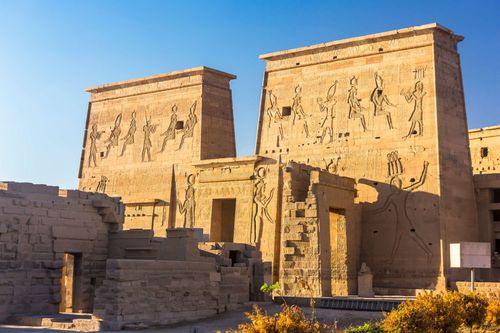Bihać
Herzegovina has no shortage of great rafting locales, but Bosnia’s BIHAĆ beats them all. The crystal-clear River Una rushes through town, though it’s a little further upstream that you’ll find the best rafting; the river is highest in the spring and autumn. Adventure sports aside, Bihać is a pleasant, compact town with a cheerful pedestrianized zone in the centre. Here you’ll find the Church of Zvonik and Fathija Mosque, both visitable, but most interesting is the Captain’s Tower, once a prison, now a museum.
Rafting in Northwest Bosnia
Rafting in the Bihać area is possible year-round – the continuous flow of tourist traffic means that you’ll usually be able to join a group (6–10 per boat) in any month, though the main season runs from March to October. Six kilometres from town, Una Kiro (037 361110, una-kiro-rafting.com) is the best established company for foreigners, and has a camping ground next to their base. There are three main routes to choose from; listed per-person prices include equipment and transport, but not meals.
Kostela-Bosanska Krupa An easy 24km, 5hr stretch that’s best for novices.
Kostela-Grmuša Short, but packs in some meaty rapids on a 13km, 4hr course.
Štrbački Buk-Lohovo An absolutely terrifying 15km, 4hr route featuring a 25m rapid.
Jajce
Whereas Travnik has grown a little too busy for its size, little JAJCE is simply adorable – even its name is cute, a diminutive form of the word “egg”, and therefore translating as something like “egglet”. The name is said to derive from the shape of a hill jutting up in the Old Town, ringed with walls and topped with an impressive citadel. In the Middle Ages, Bosnian kings were crowned just down the hill in the Church of St Mary; the last coronation, of Stjepan Tomašević, took place here in 1461, but two years later the king had his head lopped off during the Ottoman invasion. Opposite the church are the catacombs, essentially an underground church, complete with a narthex, nave, presbytery and baptistry; if you’re lucky, you’ll find the keyholder in the restaurant opposite. Further downhill, the 21m-high waterfalls are a splendid sight, despite the pounding they took during the Bosnian conflict.
Travnik
Just a couple of hours out of Sarajevo, TRAVNIK is a good day-trip target, though its position on a main transport route detracts slightly from a delightful setting. This was the Bosnian capital during the latter part of Ottoman rule, and the residence of high-ranking officials known as viziers – you’ll see their tombs (turbe) dotted around town. Travnik also gained fame as the birthplace of Ivo Andrić, a Nobel Prize-winning novelist whose Bosnian Chronicle was set in his hometown.
The best place to soak up Travnik’s history is its majestic fifteenth-century castle, built to hold off Ottoman forces but completed a few years too late. It’s now great for a clamber around, and provides spectacular views of the surrounding mountains. Just under the castle is Plavna Voda, a quiet huddle of streamside restaurants where you can eat trout caught further upstream.












